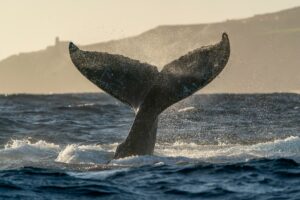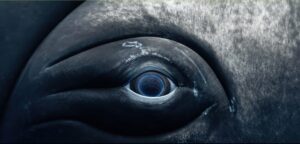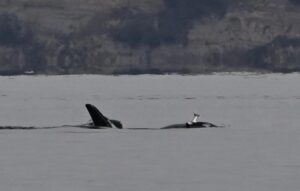Scientists have discovered four new species of deep-sea octopus off the coast of Costa Rica. They spotted the species during two expeditions looking at sea mounts in a 260 square kilometer area of the Pacific coastline.
During the first trip, in June 2023, the team found three never-before-seen hydrothermal springs. The springs, between 18.5km and 55.5km apart, had distinct temperatures and water chemistries. All three are teeming with life, but the species around each are different because of the varying environmental conditions.

Brooding mother octopuses on El Dorado Hill. Photo: Schmidt Ocean Institute
An octopus garden
Around the low-temperature springs, the scientists spotted two octopus nurseries and a skate nursery using a remotely operated vehicle (ROV). Six months later, the team sent their ROV “SuBastian” back down to capture footage of the springs and collect samples.
These low-temperature springs are very difficult to find. They are only slightly warmer than the seabed. The temperature on the seabed was around 2°C and the average temperature of the springs is 10°C. The team told New Scientist that you can only see the springs because of the slight diffraction of light they cause.
“It’s like walking in a forest you’ve never been in before, with a flashlight, trying to find a hot spring. We were kind of taking a gamble,” researcher Beth Orcutt said.
In comparison, the 350°C hydrothermal vents produce massive plumes of smoke that can be seen from a distance.

An octopus hatching. Photo: Schmidt Ocean Institute
Between the two expeditions, the team spotted four new species of octopus. All were approximately 2.4km below the surface. Janet Voight from the Field Museum of Natural History and Fiorella Vasquez from the Zoological Museum at the University of Costa Rica are now working on describing the species.
The Dorado octopus
The team named one species the Dorado octopus, because they found it on a rock called El Dorado Hill. It is a new type of muusoctopus and was the only species of the four that was brooding eggs at the hydrothermal springs. Scientists suspect that muusoctopus do this near vents because of the slightly warmer water. The other three new species are yet to be named.

A baby octopus on El Dorado Hill. Photo: Schmidt Ocean Institute
In total, the team collected 310 animal samples across their expeditions. Costa Rica’s Museum of Zoology will keep the samples. This is unusual, deep sea samples are often sent to the U.S. or Europe. Researchers from The Schmidt Ocean Institute are hoping that keeping the samples in Costa Rica will allow local scientists to better understand local ecosystems and in turn protect them.
One of the primary difficulties in protecting deep-sea ecosystems is our lack of knowledge. “It’s hard to [protect deep-sea wildlife] when you don’t know it’s down there,” Orcutt told New Scientist.






